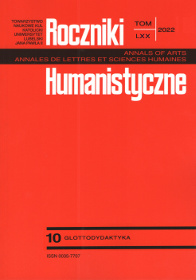Polszczyzna jako język „daleki” i „bliski” – studium porównawcze strategii inferencyjnych uczących się
Polish as Both a Typological Distant and Related Language—a Comparative Study of Learners’ Lexical Inference Strategies
Author(s): Anna SeretnySubject(s): Language and Literature Studies, Foreign languages learning
Published by: Towarzystwo Naukowe KUL & Katolicki Uniwersytet Lubelski Jana Pawła II
Keywords: Slavic learners of Polish; Asian learners of Polish; inferencing strategies; comparative study
Summary/Abstract: Polish is a less widely-learnt language. Recently, however, it has become attractive to many learners in Asia, who, whilst learning this typologically distant language in which nothing ‘looks or sounds familiar’, struggle with its grammar and vocabulary. This study examines lexical inference strategies used by Asian learners at B level in order to establish the meaning of unknown words, and compares them with those implemented by learners of Slavic origin for whom Polish is a closely related language. This study has let us establish what strategies the two group of learners employ most often; how the strategies employed by Asian students differ from those of Slavic ones, and what the difference is. The results have thus produced some interesting insight for pedagogic vocabulary practice. Lexical inference is an important way of enlarging learners’ mental lexicon.
Journal: Roczniki Humanistyczne
- Issue Year: 70/2022
- Issue No: 10
- Page Range: 27-44
- Page Count: 18
- Language: Polish

